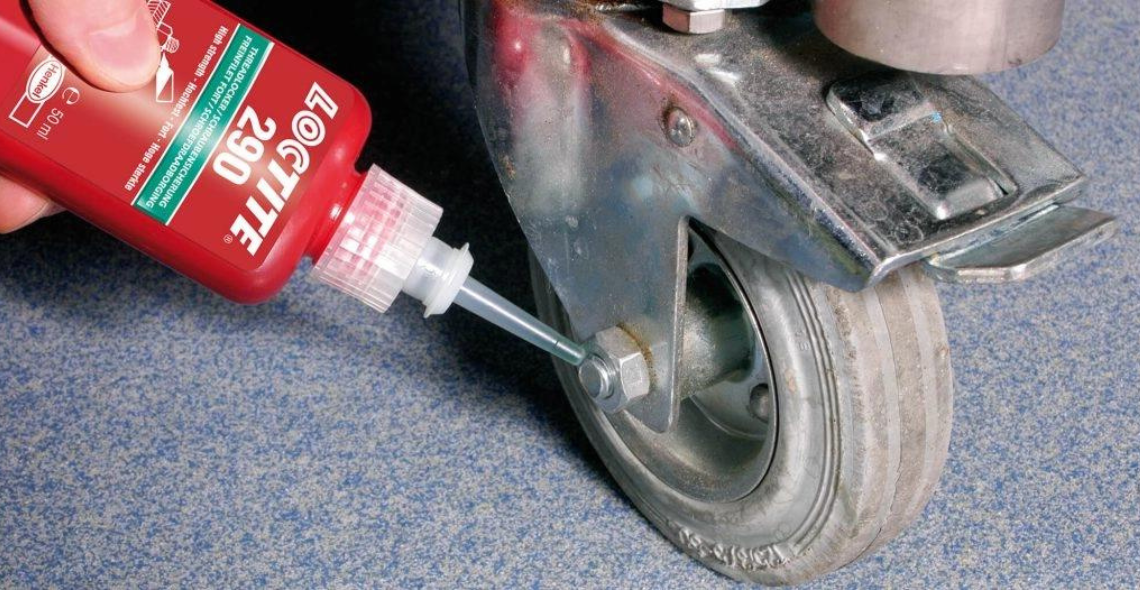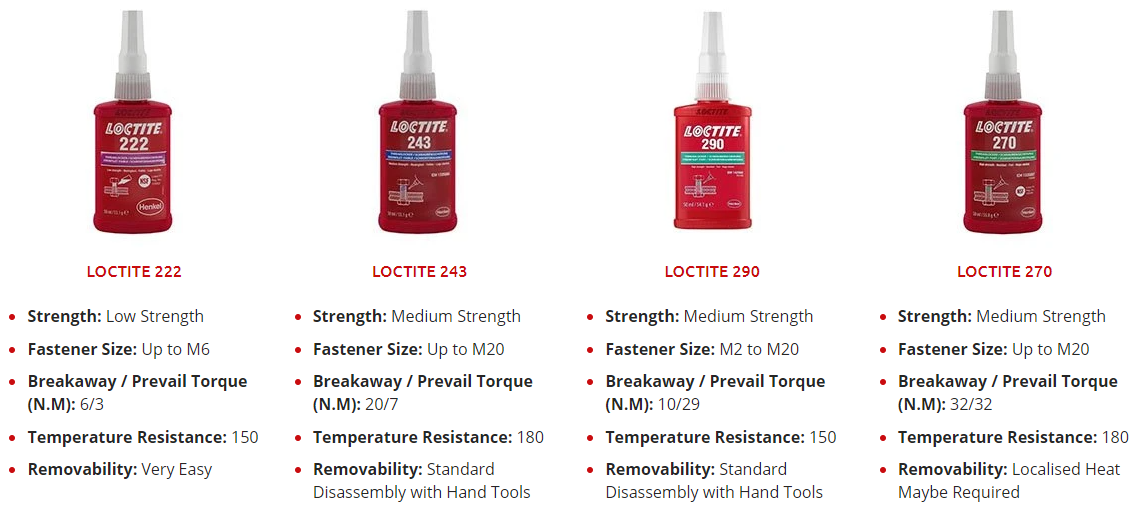How to choose the right Threadlocker
Published date: 10 February 2021

Mechanical locking devices (such as spring washers, nylon ring nuts, flat washers) have been designed to solve the common loosening problem that occurs in most threaded assemblies. The fact is that as assemblies “locked” with these devices frequently loosen under vibration, thermal expansion and/or improper torque, they do not retain clamp load. That is why the threadlocker has been invented.
The threadlocker is a single part of a liquid or semi-solid adhesive. They cure hard solid thermoset plastic at room temperature when applied between steel, aluminum, brass, and most other metal surfaces. They’re curing in the absence of air. The adhesive fills the gaps between the threads to lock the threads and the joints.
Advantages of using threadlockers:
- Mating metal thread locks to avoid vibration and shock loosening
- Anti-fluid and corrosion seals
- Provides lubricity during assembly to attain controlled torque.
- For reliable disassembly, prevents galling and seizing
Recommended Loctite Threadlockers
There are four things to remember when choosing a threadlocker
1. Strength
- Low Strength (Purple)
- Medium Strength (Blue) – most applications can be served with blue threadlocker
- High Strength (Green)
2. Fastener Size
- There’s a LOCTITE threadlocker for any size of fastener
3. Application Methods
- Pre-Assembly: Most Loctite liquid threadlockers are designed to be applied at the moment parts are assembled
- Post-Assembly: Wicking grade formula can be applied on parts that are already assembled
Handy Hints
Cleaning: It is recommended to use Loctite 7061 or Loctite 7070 to degrease and clean surfaces prior to applying the adhesive.
Activation: If cure speed is too slow due to passive metals or low temperature (below 5 C), use activator Loctite 7471 or Loctite 7649 (see cure speed vs. activator graph in the TDS).
Still undecided? If you have any other question we are happy to help.
Send us an email to info@conro.com or give us a call on 0208 953 1211 for further information.
Source: henkel-adhesives.com





Comments
There are currently no comments, be the first to comment.